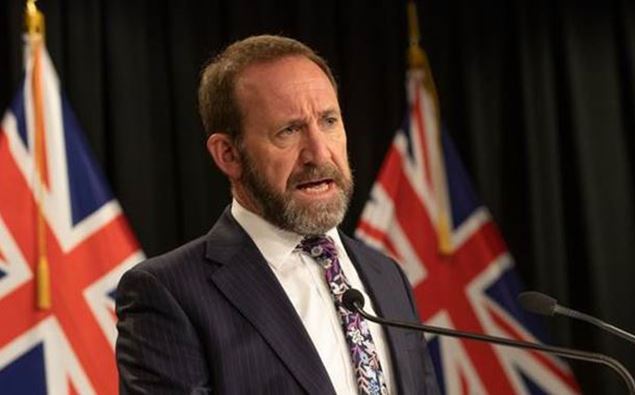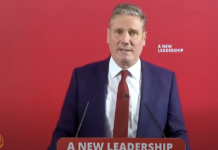On 1 August Minister of Health Andrew Little announced what he described as the start of a plan for the beleaguered workforce in Aotearoa New Zealand’s health system: Government’s 5 year late health workforce announcement.
In October 2017, when Labour became government with its two coalition parties, it inherited a health workforce crisis from the previous National-led government. As a consequence of a high level of inaction, partly due to a misplaced faith in restructuring as the solution, the situation has unfortunately further deteriorated.
Now other ‘c’ words are being used at the clinical frontline to describe the state of the workforce such as collapse and carnage.
In summary, the announcement involved:
- easing the process for recruiting overseas nurses and provision of up to $10,000 in financial support for overseas nurses for registration costs;
- meeting the costs of reregistration for New Zealand nurses who want to return to work;
- covering overseas doctors’ salaries during their six-week clinical induction courses and three-month training internships;
- coordinated and enhanced national and international healthcare recruitment campaign;
- training more doctors, nurses and radiographers; and
- dedicated immigration support services to make it easier for health workers to move to New Zealand.
Colossal ‘porkies’
The Health Minister’s announcement included a colossal porky in falsely claiming that the above measures could not have been introduced until his new health system established by the Pae Ora Act took effect on 1 July.
In particular, Andrew Little asserted:
Our changes to the health system only came into force a month ago, creating a single national health service. That means we can now have a single point of co-ordination and put some real heft into a national campaign to address the decades-old workforce shortage and ease pressure on the health system. These changes just weren’t possible under the old disjointed and bureaucratic structure.

Health Minister Andrew Little’s claims ranged from absolute balderdash to absolute double balderdash
Absolute balderdash! Minister Little’s claim that a single national health service only came into force a month ago is both senseless and untrue. A single national health service came into force as a result of the Social Security Act 1938. But give the Minister a break; he is only out by a mere 84 years!
Since that time Aotearoa has had a single national health service in which, of necessity, has been delivered locally, largely through public hospitals and general practices. That situation remains substantially unchanged today.
What has changed is that points of statutory decision-making closer to the provision of healthcare in these hospitals and practices have been removed. Consequently, our single national health service has seen its bureaucracy repositioned and much more centralised.
An even bigger porky
But there is an even bigger Ministerial porky than this. His final sentence states: “These changes just weren’t possible under the old disjointed and bureaucratic structure.” Absolute double balderdash!!
Prior to the establishment of Te Whatu Ora (Health New Zealand – HNZ), it was the Ministry of Health who had overall responsibility for the health workforce; not district health boards (DHBs).
On 1 July HNZ did not just replace the DHBs. It took over the Ministry’s national planning and funding functions. This included the Ministry’s responsibility for workforce planning and development.
The Labour led government could have required the Health Ministry to implement all the measures it announced on 1 August as early as October 2017. Instead it waited for nearly five years.
The sceptic might reasonably say this was done simply to make its health restructuring look good. The health professional at the clinical frontline might just as reasonably say the same thing.
Whether this appalling neglect was intentional or due to incompetence, the outcome was disastrous for the health system – patients and workforce.
Band-aids are not a workforce plan
The announcement itself, apart from being nearly five years too late, has some merit. Its individual elements are all useful. But, in the context of the seriousness of the deteriorating workforce crisis/collapse/carnage, they are band-aids. Band-aids can have a useful purpose but a treatment or cure they are not.

Band-aids useful but not a plan
Band-aids are certainly not the start of a workforce plan (arguably “training more doctors, nurses and radiographers” is but only in an itsy-bitsy, partially embryonic, sort of way). What is needed are actionable workforce recruitment and retention strategies for the various health professional occupational groups.
Band-aids are certainly not the start of a workforce plan (arguably “training more doctors, nurses and radiographers” is but only in an itsy-bitsy, partially embryonic, sort of way). What is needed are actionable workforce recruitment and retention strategies for the various health professional occupational groups.
By health professionals I mean doctors and dentists, nurses, and allied health professionals (of which radiographers are a very small component; scientists, physiotherapists and psychologists are also examples among numerous other groups critical for the provision of safe quality healthcare).
The extent of the severe shortages among these health professionals largely varies from around one-fifth to one-quarter, depending on the specific occupational group (some are higher). The outcome ranges from presenteeism (working while ill) to fatigue to even burnout.
The consequence of this outcome is not just that the health of this exhausted workforce suffers. Too many patients are denied access to the healthcare that they need. Those that are fortunate to access healthcare receive it in sub-optimal conditions which increases the risk of errors leading to adverse patient outcomes.
Recruitment before retention
Usually, when considering recruitment and retention, more emphasis is sensibly placed on the latter. A workplace with high retention (ie, low turnover) is more attractive for recruitment than one that is not.
However, the shortages are now so severe (made more difficult than the aging of the workforce) that the greater emphasis needs to be on recruitment. Shortages have reached a point where the absence of sufficient recruitment is worsening retention.
At this point in time, improving recruitment will improve retention rather than the other way around.
Variability of health professional labour markets
While each of the multiplicity of occupational groups have severe shortages, there is much variability in their labour markets. Length of training is an influential factor. The shorter the training for an occupational group (say three years), the better the ability to address shortages by training more in New Zealand.
The longer the training (13 years minimum for medical specialists is the longest), the greater the reliance on international recruitment.
The variability of labour markets means that competition is also variable. It can competition include with the private health sector, outside the health system (for example, laboratory scientists are highly employable in the wine industry), or internationally (especially Australia) which is the case for medical specialists, nurses and some allied health professionals.
Australia is important not just for its proximity and similar training. Although less severe Australia has its own shortages. By offering much higher remuneration and other conditions (in 2019 BERL estimated the basic 40-hour pay gap for medical specialists to be over 60%), Australia is able to recruit specialists and nurses from New Zealand). For the economy as a whole the average pay gap is around 25-30%.
But the effect of this is worse. Australia can easily compete with New Zealand when recruiting from other parts of the world. Te Whatu Ora will not be competing for specialists and nurses especially in Australasian labour markets; it will be competing in Australian labour markets.
What the Government through Te Whatu Ora needs to focus on is the expeditious development of practical recruitment strategies targeted at each of the labour markets that these different health professional occupations find themselves in.
Only then will Aotearoa’s health system be able to achieve improved healthcare and wellbeing for New Zealanders.
Ian Powell was Executive Director of the Association of Salaried Medical Specialists, the professional union representing senior doctors and dentists in New Zealand, for over 30 years, until December 2019. He is now a health systems, labour market, and political commentator living in the small river estuary community of Otaihanga (the place by the tide). First published at Otaihanga Second Opinion





A friend got a call from a overseas recruitment company. On offer, double wage, plane tickets, three month accom paid (time to find a flat), plus moving costs. She is not a nurse but a Physio. Mr. Little is several years to late and still has got nothing but hot air and empty words to show. Mind that is all Mr. Little ever had, hot air and meaningless empty words.
Also telling porkies.
1. When these health professionals arrive, especially nurses, where and how are they going to afford this live here, with Auckland, Wellington etc, etc housing affordability and supply problems?
2. This is a Ardern Labour government announcement. Things rarely progress past that exciting extravaganza phase.
3. Brown-washing government department names is patronising and duplicitous as the renaming I am assume is supposed to represent they care and are all very humble and serious but the leopard never ever changes its spots, often it gets worse.
I expect things to just get worse!
End-stage socialism anyone?
Remember Ian, they could deliver you several hundred health professionals at the stroke of a pen by simply rescinding the nasty vaccine mandate, but they won’t because their ideology trumps the welfare of sick people.
Nonsense. Even if rescinding the mandate was the right thing to do (which it isn’t), it would only be a drop in the huge bucket of shortages.
Over 500 extra nurses is not a drop in the bucket. It’s also indicative of the nasty authoritarian attitude of this government.
(I’ve just tested positive for CV19. Not a big deal, I’ve had worse colds. We really need to move on)
Two people in our team moved on, hopefully to greener pastures as the result of dying FROM covid.
Good people sadly, unlike yourself and theories.
Thats totally not true. There are between 500 and 700 nurses willing and ready to go to work. I have 3 in my family ALONE that refused the booster (and are otherwise jabbed) that cannot work. This shows you do not know what you are talking about. The vaccines have not been effective, so the mandates are moot at this point – let’s get our health care people back to work. We need to treat our own nurses here better – otherwise, they are all off to OZ for at least double the pay. what is the incentive to stay? Being classified as a 2nd class citizen? I think not – this is where the govt got it all wrong – in other countries, they begged the unvaxxed to come back because they realize they shot themselves in the foot. Same here but out govt is too arrogant to admit they were wrong. (or that the sold out our populace as cattle to be used by Pfizer in a drug experiment) – the truth always comes out in the end….
When I go to hospital for open heart surgery I rather not have anti science nurses care for me .Those who do not get vaccinated in a pandemic are not playing their part in society . They can spend their time marching with Tamaki
So let’s review what the governments scientists told you.
Stage 1: Take the vaccine and you cannot catch or transmit Covid 19.
Stage 2: Take the vaccine and you might catch it but cannot transmit it.
Stage 3: Ok you might catch it and transmit it, but you won’t die
Now: the vast majority of people dying are fully vaccinated.
( I am fully vaccinated)
If 80% of those dying are vaccinated & we have 95% of people vaccinated then simple maths tells us that being vaccinated keeps us safer (20% of those deaths are from 5% of the population is another way to explain it).
You also neglect to mention that the vaccine was produced before the different variants of Covid that are spreading now existed so while it appears to reduce the severity of illness & chance of death that could explain more people catching the new variants.
ummm the majority of the population is vaccinated ( over 90%) so therefore those catching the LESSER MORE TRANSMISSIBLE STRAIN now rampant in NZ will be vaccinated. Duh!The vaccine was developed for the earlier strains. This is the fastest mutating virus ever known to humankind. What else do you not understand? Shitloads I reckon.Lets blame the gubbermint!
It could be the water they drink .Their peace of mind comes from the fact that the majority have heard the call to be part of the vaxed team and stayed well enough not to block up the hospital system so there is room for those with other illnesses.
I do not believe the message has been other than knowing you can still get covid or pass it on if you are vaxed but it could stem the potential of t death or long covid.
How do you know that Andrew where’s your evidence
Those who are ignorant that these work and guilty of treating those who chose their body autonomy over being forced to take an experimental injection – get what they deserve – no nurses. Think about your statement – how, in the past – would you have known your nurse was vaccinated? Point it – you didn’t, and wouldn’t have known. But now you want to be self righteous when the Pfizer documents (available to all now) state the obvious – they are neither safe nor effective. So why is our govt telling the people porkies? Or worse, why are many not seeing the obvious truth – many vaccine injured and nobody helping them.
socialism andrew?
I knew you were too dim to understand the word but there really is no need to advertise the fact
keep swigging the bleach andrew, it’ll do you a power of good
Well… if you’ve got the likes of bob jones becoming AO/NZ’s latest billionaire to join the other billionaires to make now nine Kiwi-As billionaires. [Stuff. Property portfolio propels Sir Robert Jones to billionaire status. https://www.stuff.co.nz/business/114929454/property-portfolio-propels-sir-bob-jones-to-billionaire-status%5D
then surely it’s worth a showing a little generosity to The Wondrous, Great and Rich to express our gratitude from we, their long suffering slaves, serfs, hoi polloi, the great unwashed and those many general lessor human beings living in dire hardship in an otherwise rich country for the wealth creating opportunities the’ nine have given us. Not.
We AO/NZ’ers are displaying the classic symptoms of abuse. We fawn at the feet of our abusers while sucking it up and taking it like men and women abuse victims.
I remember seeing bob jones punch a TVNZ ( ? ) reporter once a long time ago and I was aghast that the reporter never punched him back. Would you let bob punch you and you not retaliate in a like minded manner repeatedly?
You, dear reader, probably would if you could be judged by the status quo out there.
We institutionally abused are rendered immobile against the tyranny of the rich. Instead of going ape shit, we stand about blaming each other for daring to screech at our Lords through the bars of their debt-prisons.
I think we 5.2 million AO/NZ’ers ( Minus nine. ) need therapy more than anything else. And to grow a pair.
Or perhaps; Betty White quote: “Why do people say, ‘Grow some balls’? Balls are weak and sensitive.
If you really wanna get tough, grow a vagina. Those things really take a pounding!”
When Ian Powell says the Labour Government are liars we should be alarmed,
When Ian Powell says the Labour Government are liars we should be alarmed,
Comments are closed.